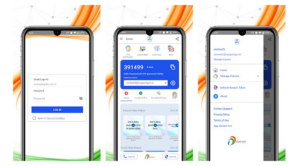Ultimate Guide for Your App to Achieve Product-Market Fit
In order for an app to become adopted by consumers, it needs to satisfy a want or need by the user.
According to research from CB Insights, 42 percent of startups reported “no market need” as their main reason for failing.
So how do you know if there is a need in the market or not?
When your app is trending on all major social media platforms, you know you have achieved the phenomenon of product-market fit. Keep reading to discover how to accomplish this phenomenon and connect with your market.
What Is Product-Market Fit
To achieve product-market fit, you must first understand what exactly it means.
The term product-market fit was first used by silicon valley capital firm Andreessen Horowitz in a 2007 blog post.
Since Andreessen Horowitz first debuted it, the term has collected quite a few different definitions. But they all come back to “having a product that can satisfy the needs of a healthy market.” In other words, your app is selling abundantly to your target market.
Keep reading this comprehensive guide to learn product-market fit tips and how your business can achieve it.
Step 1: Find Your Market
This may be easier said than done. Sometimes you feel like you are in the right market until your product isn’t selling.
To truly find your market and the audience you will be selling to, it is necessary to do some market research. You can do this a few different ways, including:
- Interviews
- Surveys
- Questionnaires
- And focus groups
This is a crucial part of the process that should not be skipped or looked over. During this process, you should be defining certain traits and characteristics that your ideal customer would have. You should include things like
- Age
- Gender
- Job description
- Hobbies
- And demographics
This way, everyone involved in the project knows exactly who you are targeting and can adjust their work accordingly.
Step 2: Gather Information
Now that you know what your target market looks like, its time to understand what the consumers want from you.
During this stage, you will want to use all available resources to get a better understanding of your customer and what they want from you.
You should start with any existing data that may be available, like customer surveys, interviews, and any other relevant information.
Next, you can move on to gathering your own information from customers. At this point, you should be conducting things like
- Customer surveys
- one on one interviews
- Focus groups
- Social media campaigns
- And keyword research
After gathering the necessary information from your consumers, you can then sort through the data to find what is relevant. The information you are looking for should give you some insight into what your customer wants from you and what the market is lacking. This is where your product will come in.
During this process, it is a smart idea to do conduct research into your competition as well. This way, you will be able to determine what is working for them and what you can avoid.
It is recommended to formulate a SWOT analysis at this point to determine your competitor’s strengths, weaknesses, opportunities, and threats.
It might be a good idea to hire a research firm when looking into the competition as they might have certain insights into the industry and can provide a more neutral opinion on them.
Step 3: Create Value
After gathering all the necessary information from the consumer and competition, you can then define your value proposition.
The value proposition will address what exactly is going to make you stand out from the competition and make the product valuable.
Here is where you will use the information you gathered from the consumers on what their need is and use it to develop your product. You can figure out what innovations will be needed to please the consumers and to ensure your app will appeal to them.
Your value proposition should include things like
- What customer needs it addresses
- How it benefits the customer
- Why it’s better than the competition
The value proposition should be simple, clear, and to the point. A great example of a companies value proposition is Uber, “the smartest way to get around.”
With such a small and straightforward message, uber clearly addresses each bullet point.
Step 4: Create MVP
Not talking about Michael Jordan, MVP, when it comes to product/market fit, means minimum viable product.
Your MVP will be a prototype that is as close to the real thing as possible using the least amount of resources. Your MVP should include enough features for your consumers to be able to provide feedback about the product.
The idea behind creating an MVP prototype is that it typically costs less to develop and can give you insights about what to include on the final product and what you can potentially leave out.
After creating your MVP, you can give it to a select group of from your target market, people like early adopters, who are normally the first to buy products. Getting the prototype in the consumer’s hand will allow them to experience the product and features that come with it.
Step 5: Test and Adjust
The final stage of the product market fit for apps is where you will be testing your prototype to further develop it into the app you envisioned and your customer needs.
Here you will be doing further research into the product and how your market is responding to it. You can do things like one on one interviews with potential customers, giving them the MVP to see what their reaction is. You can ask questions to gather additional feedback.
You can also try conducting surveys to gauge interest around your app.
As you go through this process, you will gain a better understanding of what is working and what needs to be fixed.
You can adjust your prototype as necessary to ensure when you are ready to launch the final product, you can do so in full confidence.
For More on Product-Market Fit
Now that you have a good understanding of what product-market fit is, you can use these steps to develop the app you have always dreamed of making.
For more information about product-market fit and other tech news, check out the rest of our website!








![How To Create A Landing Page From Scratch – 11 Best Practices [Infographic]](https://technofaq.org/wp-content/uploads/2018/04/The-Anatomy-Of-A-Perfect-Landing-Page-150x150.png)







